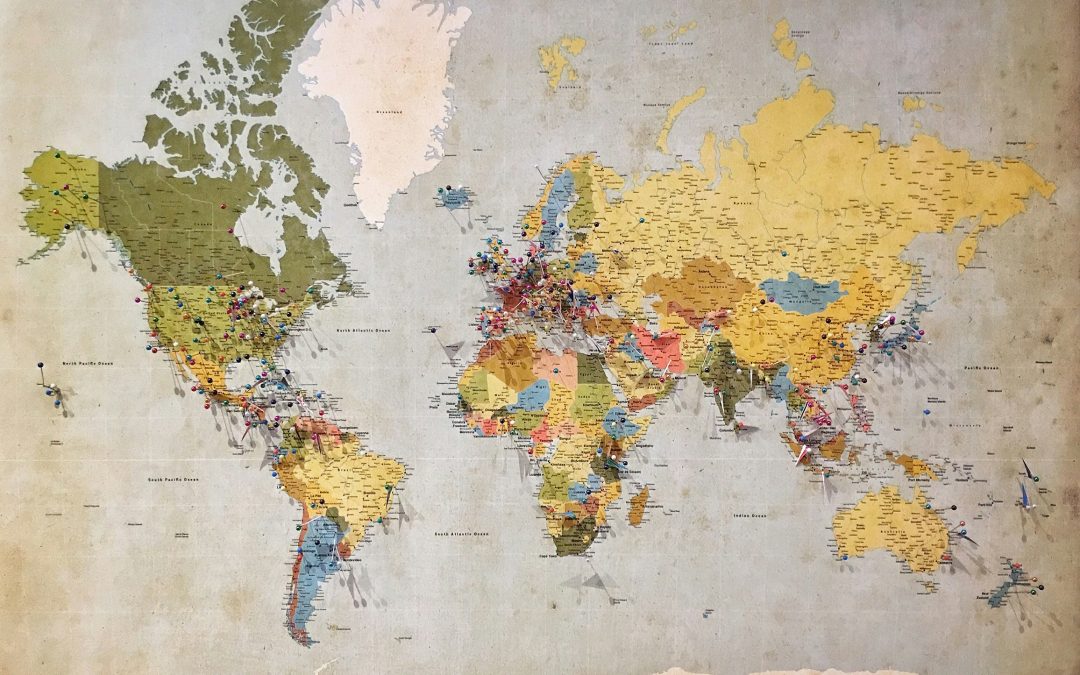Europe is geographically close – yet for many Turkish travelers, entry feels like a bureaucratic long-haul flight. The Schengen visa is often to blame: a process associated with finding appointments, high fees, and uncertainty. At the same time, new paths are emerging in Europe for location-independent professionals: Digital Nomad Visas. This guide helps you understand the pros and cons of both options and quickly decide which route makes more sense for you as a tourist or as a digital nomad.
Quick Overview – What you will find in this article:
- Briefly explained: Schengen Visa vs. Digital Nomad Visa (DNV)
- Typical costs & timeline for a Schengen application
- Which European countries offer DNVs and what requirements (income, insurance, proof) apply
- Checklists & practical examples for Turkish travelers and digital nomads
Example – a typical real-life process: From booking an appointment with a service provider to receiving a decision, it often takes 4–8 weeks; the application and service fees alone can quickly add up to over €110 per person, plus travel costs and possible requests for additional documents. If you are aiming for a Digital Nomad Visa, however, you often need to prove a stable monthly income and have suitable health insurance – in return, you can often live legally in the host country for 6–12 months and work remotely.
Part 1: The Hurdle Race for a Schengen Visa
For Turkish citizens, entering the Schengen Area is not a given but is tied to a formal visa process. Since Turkey is neither a member of the EU nor the Schengen Area, the visa remains an administrative hurdle that requires careful preparation and verifiable proof.
The Application Labyrinth: Bureaucracy and Costs – a Realistic Process
Many applicants go through external service providers (e.g., iData for Germany or TLScontact for Switzerland). These providers handle appointment booking and document submission but often increase the effort and costs – especially when appointments are needed on short notice or documents need to be submitted later.
Did you know? The pure application fees (consular fee + service fee) are often over €110 per person. In addition, there are travel costs to the consulate, possible translation or certification costs, and expenses for missing documents. These expenses are generally non-refundable.
Orientation: How long a typical application takes
- Preparation (gathering documents, insurance, proof): 7–21 days
- Booking an appointment with a service provider/consulate: 7–30 days depending on the season
- Submission & processing time at the consulate: 15–45 days (variable)
- Total duration until decision: often 4–8 weeks
Sample Calculation (per person, indicative):
- Schengen visa fee: ~€80
- Service fee (iData/TLScontact etc.): €30–€60
- Travel costs/documents/translations: €20–€100
- Total costs (conservative): €130–€240
Important: Consulates subjectively assess the intention to return (“return prognosis”). This means that young, single individuals, freelancers, or self-employed persons may more frequently face critical questions. Clean proofs (employment contract, bank statements, property or family proof) reduce the risk of rejection.
Practical Tip: Download our free Schengen checklist (10 must-have documents) and watch the screencast video: “How do I book an iData appointment?” – a short tutorial that helps you avoid the most common pitfalls.
What You Need: The Document Flood (Checklist)
The requirements for a Schengen application are precise – and often extensive. Gather the following documents carefully and check formats, validity, and certifications before booking an appointment. Below you will find a clear must-have list plus useful additions (“nice-to-have”) and notes on formats.
- Valid Passport – at least 2 free pages, the passport should be valid for at least 3 months beyond the planned departure date.
- Biometric Photo – recent photo, dimensions according to Schengen standard (35×45 mm), neutral background; print quality: matte photo paper or high-resolution JPEG.
- Proof of Travel Purpose – flight reservation (round trip) or detailed travel plan; hotel bookings or invitation letter with address and contact information.
- Financial Proof – bank statements for the last 3 months, salary slips, or payment receipts; for self-employed individuals: profit and loss statement, tax assessments.
- Proof of Ties to Turkey – employment contract, certificate of employment, rental agreement, land register extract, marital status certificates (e.g., marriage certificate, children’s birth certificates).
- Travel Health Insurance – minimum coverage typically €30,000 for medical emergencies and repatriation (check country-specific requirements); policy as a PDF with name, duration, and coverage amount.
Nice-to-have / additional documents (increase your chances of success):
- Letter of employment confirming leave or a project contract
- An invitation letter from a host with a copy of their ID
- Proof of booked return arrangements (e.g., further education contract, fixed start date for a job)
- Previous travel stamps in the passport (shows travel history)
Formal Details & Common Mistakes
Pay attention to format, readability, and completeness. Common mistakes that lead to queries or rejections:
- Expired or soon-to-expire passports
- Incorrect photo formats or poor scan quality
- Incomplete bank statements (blacked-out entries, missing pages)
- Missing translations or non-certified documents when required by the consulate
The “Wall of Rejection”: Why Applications Fail
The most common reason for rejection is that the consulate has “reasonable doubts about the intention to leave before the visa expires” – the so-called return prognosis. This assessment is partly subjective and can disadvantage certain groups (e.g., young, single applicants, freelancers, or artists) who are considered statistically riskier.
Practical Tip: Reduce doubts with clear proofs: current employment contracts, firm bookings, property deeds, or binding return dates. For the self-employed, official tax documents and client references help.
Mini Case Study – Short & Concise:
“Case A – Mehmet, 28, Freelance Designer: Application rejected due to unclear income proof. What was missing: detailed invoices/tax documents and a consistent bank statement. Action: Submission of 6 months of invoices + tax return → new application.”
Download & CTA: Download the printable Schengen checklist (PDF) with must-haves and nice-to-haves, or start the digital preparation tool check (step-by-step). A short how-to video (60s) shows an example of what a correct insurance certificate looks like.
Part 2: The New Frontier – Conquering Europe as a Digital Nomad
While the classic tourist visa remains a frustrating process for many, digital nomad visas (DNVs) are opening new doors for location-independent professionals. If you work remotely — e.g., as a developer, marketer, or designer — DNVs can allow you to legally live and work longer in a European country instead of constantly being a tourist.
Who are the Turkish Digital Nomads?
The community of Turkish digital nomads is growing noticeably: platforms and local groups now connect several thousand members. Typical professions are software development, digital marketing, content creation, or graphic design — professions that allow you to work for international clients and remain remote.
Digital Nomad Visas (DNVs): Your Ticket for Longer Living & Working
Unlike the Schengen visa, Digital Nomad Visas often allow you a legal stay of several months up to a year or longer, during which remote workers are officially allowed to live and work in the host country. The requirements vary but, in return, offer legal clarity, a clear residence route, and often better options for longer stays or even a residence permit.
Typical Core Requirements for a Digital Nomad Visa
- Non-EU Citizenship: DNVs are mostly aimed at third-country nationals.
- Proof of Remote Work: Contracts, client lists, or references that prove you work remotely.
- Minimum Income: Each country sets its own threshold; examples below show the range.
- Health Insurance: Full coverage for the stay in the host country is often mandatory.
Country Quick Guide: Top Options in Europe (Short Profiles)
The following mini-facts will help you compare quickly. (Note: figures and rules change — check official sites before applying.)
| Country | Minimum Income (approx.) | Visa Duration / Advantage |
|---|---|---|
| Portugal | ~€3,480 / month | DNV paths with a clear perspective on longer-term residence and eventually even citizenship; attractive living & lifestyle. |
| Spain | ~€2,762 / month | DNV & other programs with special tax rules in certain cases (Beckham’s Law varies); good work-life balance. |
| Germany | no fixed amount (case-by-case) | Freelancer and residence options with a convincing business/project plan; stable legal framework, high standard of living. |
| Croatia | ~€2,870 / month | Digital nomad visa possible; in certain cases, tax advantages on foreign income (check case-by-case). |
| Hungary | ~€2,000 / month | One of the lowest income thresholds in Europe; attractive for cost-conscious living with good infrastructure. |
How to Choose the Right Country
Answering three questions will help: 1) What is your net monthly income? 2) Do you want to aim for long-term residency or just live there for 6–12 months? 3) Is a specific tax system / a special lifestyle environment important to you?
- Sample Calculation: With €2,500 / month, Hungary is often realistic; in Portugal or Spain, you will more likely need €2,800–€3,500 / month, depending on the region and family status.
- Residence Path: In some countries, repeated DNVs or extensions can lead to a residence permit or permanent residency in the long run.
- Taxes: Tax liability depends on residency status and the source of income — inform yourself separately before you move.
Tip: Use our interactive country filter or the DNV calculator to find your suitable destination based on your income, desired number of months, and preferred country characteristics.

If you like, we offer short experience videos (2–3 minutes) with Turkish digital nomads for each featured country — ideal for comparing residence, work conditions, and lifestyle firsthand.
Conclusion: Which Path is Right for You?
For the Short-Term Traveler
If your goal is a short vacation, a family visit, or a business trip, the Schengen visa remains the right path. Success largely depends on careful preparation: gather complete proofs (passport, return flight, accommodation, insurance proof, bank statements) and present your intention to return clearly and comprehensibly. Treat the application like a formal process – error-free documents and complete evidence reduce the risk of rejection.
For the Aspiring Digital Nomad
If you can work remotely permanently or for several months and your income is stable, a digital nomad visa is often the better alternative. A DNV allows you to live and work legally in the host country, often provides a clearer residence route, and can give you long-term access to a residence permit. The prerequisites are usually: proof of remote work, sufficient monthly income, and suitable health insurance.
In short: As a tourist, you need perfect application documents; as a digital nomad, you plan your income and insurance proofs to meet the requirements of the respective country and benefit from the programs.
Concrete Next Steps (3-Minute Checklist)
- 1) Check prerequisites: Do you want to travel only as a tourist or live & work remotely permanently? Decide between a Schengen visa and a digital nomad visa.
- 2) Gather documents & proofs: Passport, bank statements, employment contracts, insurance proof, possibly tax documents.
- 3) Choose a country & check taxes: Inform yourself about tax implications, residency rules, and the required income in your desired country.
- 4) Submit the application & meet deadlines: Plan 4–8 weeks for Schengen applications; DNV processes can take a similar amount of time or longer (depending on the country and program).
- 5) If uncertain: Use the DNV eligibility check or download the Schengen checklist; consider seeking professional advice if necessary.
5 Steps to a Digital Nomad Visa (Quick Guide)
- Step 1: Check which countries offering digital nomad visas fit your profile (income, work type).
- Step 2: Calculate your monthly net income and compare it with the minimum thresholds (per month).
- Step 3: Gather proofs: client contracts, invoices, bank statements, health insurance.
- Step 4: Submit the application and keep track of deadlines as well as visa and residency regulations.
- Step 5: Plan for tax questions (tax) early on and check if a residence permit or long-term residency is possible.
The reality remains twofold: short-term travelers continue to face bureaucratic hurdles, while qualified remote workers are finding new paths to Europe through digital nomad visas. Both options, however, require thorough preparation — and both can significantly change your life and lifestyle.
Call to Action: Download the Schengen checklist now or start the DNV eligibility check — in 5 minutes, you will know which path better suits your life. For more in-depth questions, we offer a short consultation service (free initial consultation).







